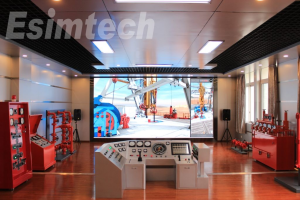Snubbing Operations in Offshore Environments: Challenges and Solutions
Offshore oil and gas extraction is a critical industry that meets global energy demands. As reserves onshore become increasingly depleted, companies are pushing further offshore, where operational challenges intensify. Among the…
Why Use Hybrid EOR Methods to Maximize Oil Recovery
The oil and gas industry is increasingly turning to advanced methods to maximize oil recovery from existing fields. Hybrid Enhanced Oil Recovery methods have gained significant attention for their ability to…
How Much Do You Know About Unconventional Reservoirs
Unconventional reservoirs are geological formations that require advanced technologies and methods for extraction due to their unique and challenging characteristics. Understanding and utilizing unconventional reservoirs is crucial for meeting the world’s…
What are the Differences Between Cased-Hole and Open-Hole Logging
When it comes to oil and gas exploration, well logging is a crucial step in understanding the subsurface geology and evaluating the potential of a reservoir. Two primary methods of well…
Understanding LNG Process: How to Enhance Its Efficiency and Safety
Liquefied Natural Gas has revolutionized the global energy market, providing a cleaner and more efficient means of transporting natural gas over long distances. The LNG process involves several critical stages,…
Adapting Training Simulations for Unconventional Oil and Gas Operations
Unconventional oil and gas operations offer new opportunities for resource extraction in areas previously considered uneconomical. However, these operations come with unique challenges that demand specialized training solutions. This article explores…
How to Improve Drilling Efficiency in Top Drive Drilling
Top drive drilling systems have revolutionized the oil and gas industry by enhancing the efficiency and safety of drilling operations. As the demand for energy continues to rise, optimizing drilling efficiency of…
The Critical Role of Reservoir Characterization in Understanding A Reservoir
Reservoir characterization involves the detailed analysis and description of a reservoir’s properties. It provides essential information for making informed decisions about the development and management of hydrocarbon resources. Understanding the geological, petrophysical,…
The Role of Downhole Equipment in Carbon Capture and Storage
As the global community grapples with the escalating challenge of climate change, Carbon Capture and Storage (CCS) has emerged as a pivotal technology to mitigate greenhouse gas emissions. CCS involves capturing…
Training and Skill Development for Sidetrack Drilling
Sidetracking drilling is a key technology in the oil and gas industry that allows operators to re-enter and deviate from existing wellbores to reach undeveloped reservoirs, bypass obstacles, or optimize production…
Optimizing Well Stimulation for Different Reservoir Types
Well stimulation is a key process in the oil and gas industry, which increases hydrocarbon production by improving reservoir permeability and oil well productivity. The effectiveness of production enhancement treatment largely…
How to Ensure Safety in Snubbing Operations
Snubbing unit operations adopt specialized equipment to insert or remove tubing from a well while it is under pressure. Given the high-risk nature of these operations, strict adherence to safety standards and…












